
Does Basil Like Full Sun? Your Guide to Growing Luscious Herbs
Basil, the fragrant and versatile herb beloved by home cooks everywhere, thrives under the warm embrace of the sun. But does basil like full sun, exactly? The answer, like most things in gardening, is a nuanced one. While basil thrives in full sun, with 6-8 hours of direct sunlight per day being the ideal range, it can also adapt to partial sun or even shadier conditions with some adjustments. This guide will delve into the fascinating world of basil sun requirements, equipping you with the knowledge to cultivate this culinary treasure, whether you have a sun-drenched balcony or a partially shaded windowsill.
Understanding Basil’s Sun Requirements: Why Sunlight Matters
Sunlight plays a vital role in the life cycle of basil, influencing various aspects of its growth and development. Here’s a closer look at why basking in the sun is crucial for your beloved herb:
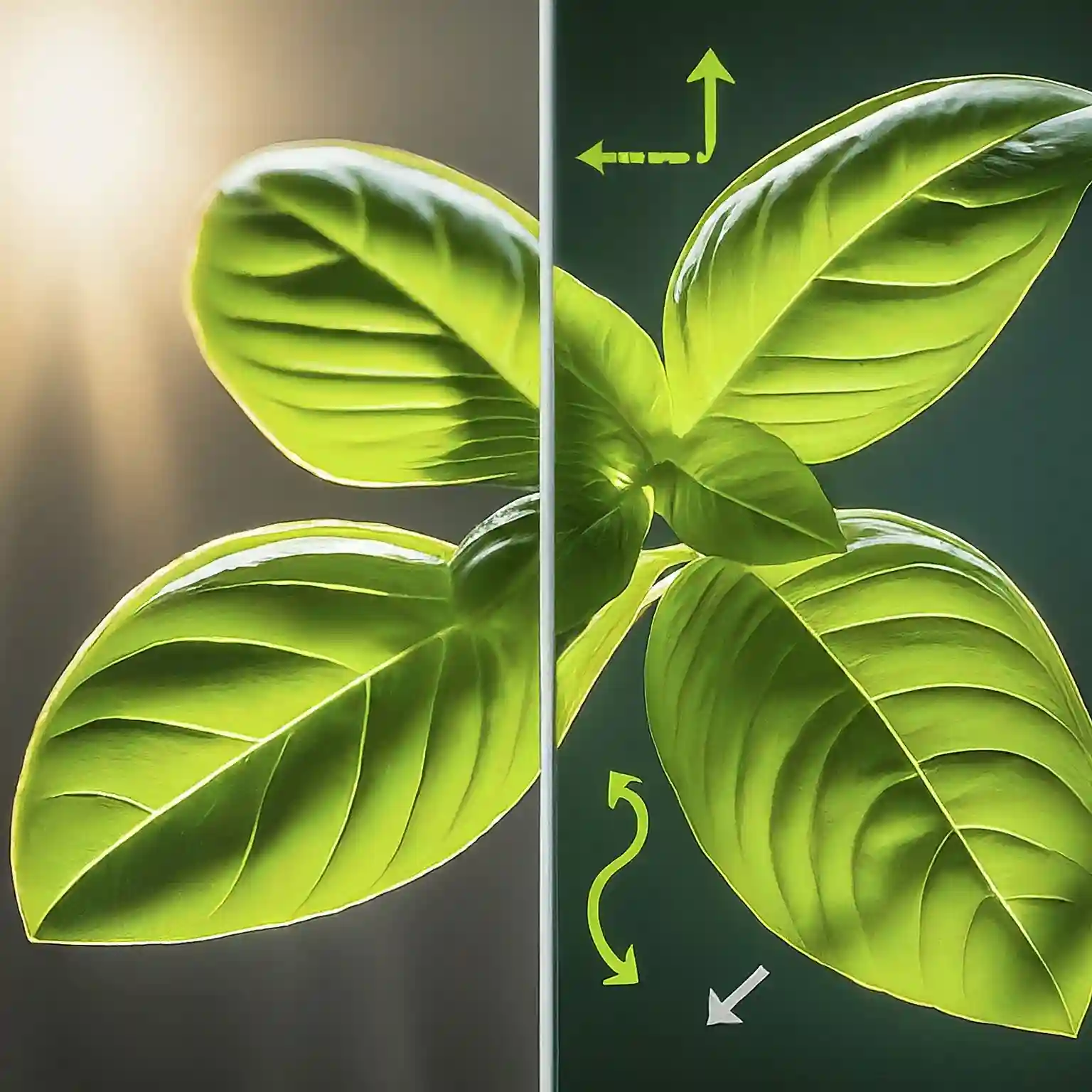
1. Photosynthesis and Energy Production:
Like all plants, basil relies on the process of photosynthesis to convert sunlight, water, and carbon dioxide into energy (glucose) for growth and survival. This process occurs within the leaves, where chlorophyll, a green pigment, acts as a light-absorbing molecule. The more sunlight basil receives, the more efficiently it can photosynthesize, leading to:
- Faster growth: Increased energy production translates to faster stem and leaf development, resulting in a robust and bushy plant.
- Enhanced production of essential oils: The sunshine not only fuels growth but also stimulates the production of essential oils within the leaves, which contribute to basil’s distinct aroma and flavor.
2. Impact on Flavor and Aroma:
The quality of sunlight significantly impacts the taste and fragrance of basil. Adequate sun exposure promotes the production of volatile organic compounds (VOCs) within the leaves. These VOCs are responsible for the characteristic basil aroma and the complex flavors we associate with the herb. Studies have shown that basil grown in full sun exhibits a stronger and more desirable flavor profile compared to those grown in partial shade or with insufficient light.
3. Encouraging Healthy Plant Structure:
Sunlight plays a crucial role in promoting a sturdy and healthy plant structure in basil. When exposed to sufficient sunlight, basil plants tend to develop:
- Thicker stems: With adequate sunlight, the stems become sturdier and less likely to become leggy or weak, supporting the weight of the leaves effectively.
- Compact growth: Full sun exposure encourages basil to grow in a bushier and more compact manner, leading to a plant with a higher yield of usable leaves.
By understanding these vital functions of sunlight, you can create the optimal growing conditions for your basil and unlock its full potential in terms of growth, flavor, and overall health.
Defining “Full Sun” for Basil: Decoding Sunlight Requirements
The term “full sun” can be interpreted differently depending on the context. In the world of basil, understanding what constitutes “full sun” is crucial for providing the herb with the optimal amount of sunlight it needs to thrive.
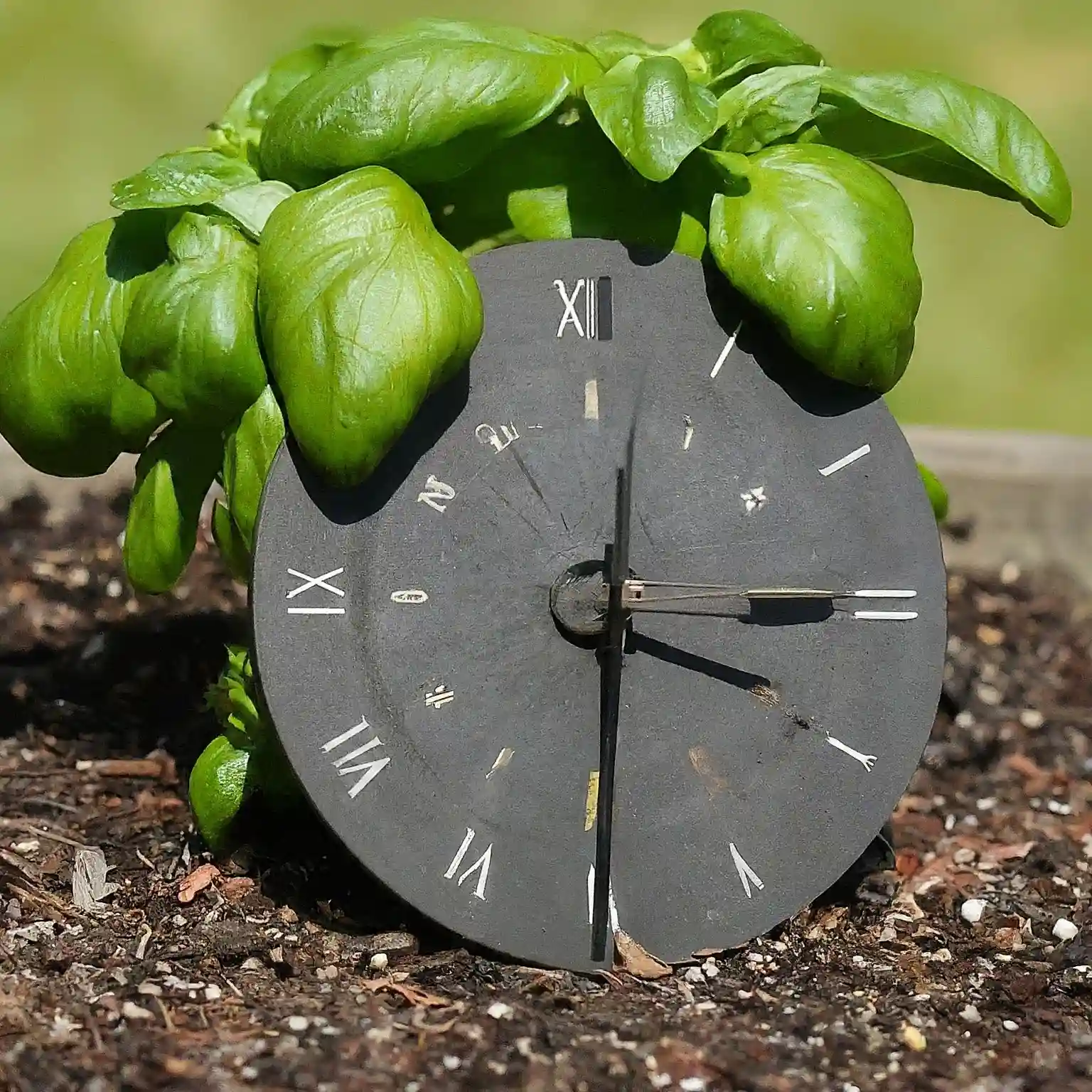
1. Explanation of Direct Sunlight Hours:
When referring to “full sun” for basil, we’re specifically talking about 6-8 hours of direct sunlight per day. This means that the plant should receive unfiltered sunlight for this duration, without any obstructions like trees, buildings, or shade cloth casting shadows for extended periods.
2. Differentiating Full Sun from Partial Sun and Shade:
It’s important to distinguish between full sun, partial sun, and shade:
- Full Sun: As mentioned earlier, this refers to 6-8 hours of direct sunlight daily.
- Partial Sun: This implies the plant receives 3-6 hours of direct sunlight, often with some shade throughout the day.
- Shade: This refers to areas receiving less than 3 hours of direct sunlight, typically under constant shade from structures or dense foliage.
While basil can technically survive in partial shade, it won’t reach its full potential in terms of growth, flavor, and essential oil production. It’s important to note that these categories are not absolute and can vary slightly depending on the specific climate and region.
3. Considering Regional Variations and Climate:
The ideal amount of sunlight for basil can also be influenced by regional variations and climate:
- Hot and Dry Climates: In regions with scorching midday sun, afternoon shade for a couple of hours can be beneficial to prevent the leaves from scorching.
- Cooler Climates: In areas with cooler temperatures, providing full sun, especially during the warmest part of the day, is crucial to ensure optimal growth.
By understanding the nuances of “full sun” and its variations, you can tailor your approach to sun exposure and create the perfect environment for your basil to thrive, regardless of your location.
Choosing the Perfect Sunny Spot for Your Basil: Outdoors and Indoors
Now that you understand the significance of does basil like full sun and the definition of “full sun” for this herb, it’s time to translate this knowledge into action. Here’s how to select the ideal sunny spot for your basil, both outdoors and indoors:
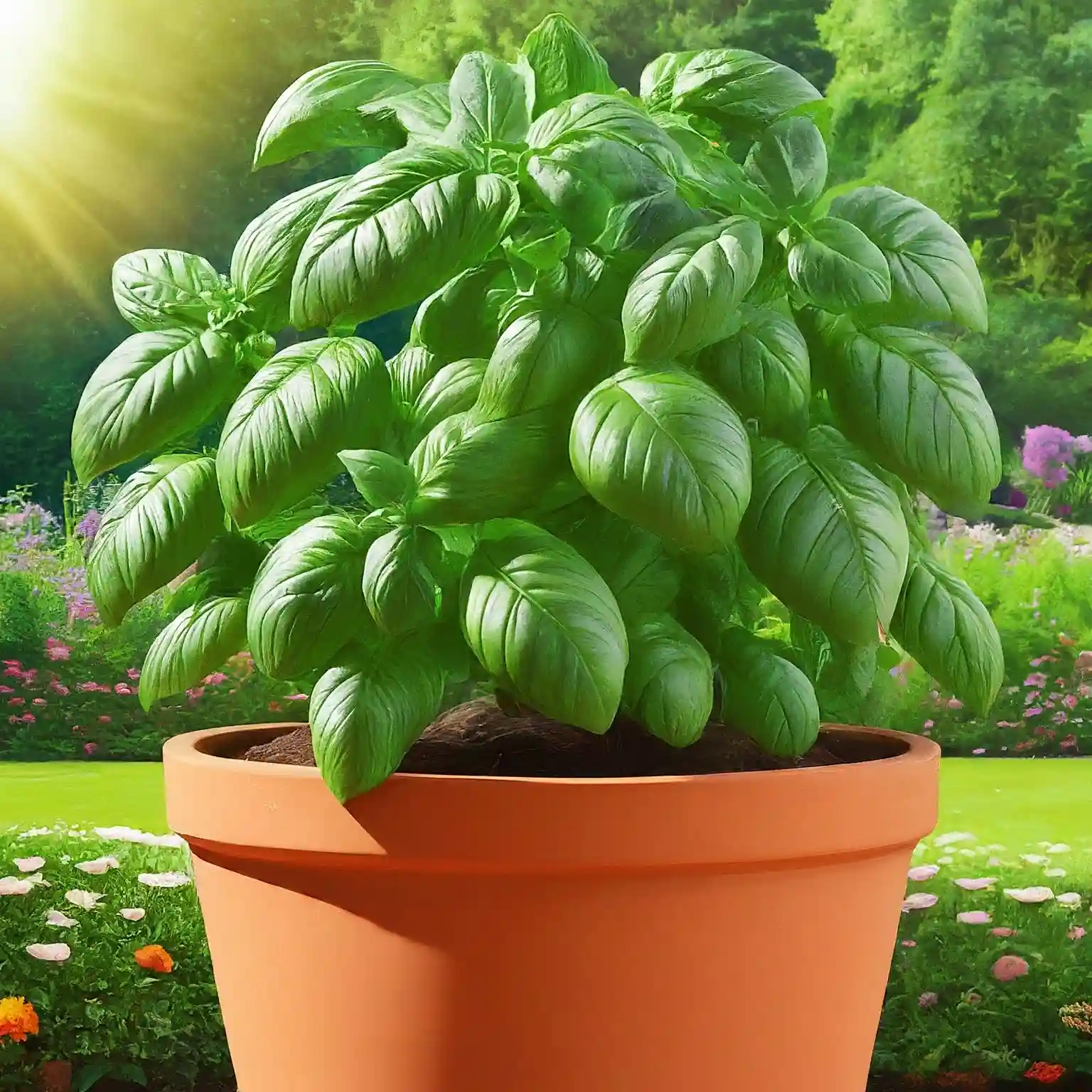
1. Selecting the Right Location Outdoors:
- Identify areas with consistent sunlight exposure: Look for areas in your garden or balcony that receive unfiltered sunlight for at least 6-8 hours daily. South-facing locations in the Northern Hemisphere and north-facing locations in the Southern Hemisphere typically receive the most sunlight throughout the day.
- Avoid areas with afternoon shade (except in very hot climates): While full sun is ideal, afternoon shade for a couple of hours can be beneficial in regions with scorching midday sun to prevent leaf scorch.
- Consider nearby structures and trees: Ensure no buildings, trees, or other structures cast significant shade on your basil plant for extended periods throughout the day.
2. Finding the Best Window Indoors:
- South or west-facing windows: These windows offer the most direct sunlight throughout the day and are the ideal placement for indoor basil plants.
- Supplementing with artificial lights if natural light is insufficient: If your windows don’t provide enough sunlight, consider using grow lights specifically designed for plants. Aim for 12-14 hours of artificial light per day for optimal growth.
- Rotate your plant regularly: To ensure even growth, gently rotate your basil plant every few days to expose all sides to the light source.
Remember, providing your basil with the appropriate amount of sunlight is crucial for its health and success. By following these guidelines and observing your plant’s response to its location, you can adjust accordingly to create the perfect sunny haven for your culinary companion.
Bonus Tip: If you’re unsure about the amount of sunlight a specific location receives, you can use a light meter to measure the light intensity. This can be particularly helpful when determining if your indoor lighting setup provides sufficient light for your basil plant.
Caring for Basil in Different Sun Conditions
Understanding does basil like full sun is only half the battle. It’s crucial to adapt your care routine based on the amount of sunlight your basil receives, ensuring its continued growth and vitality.
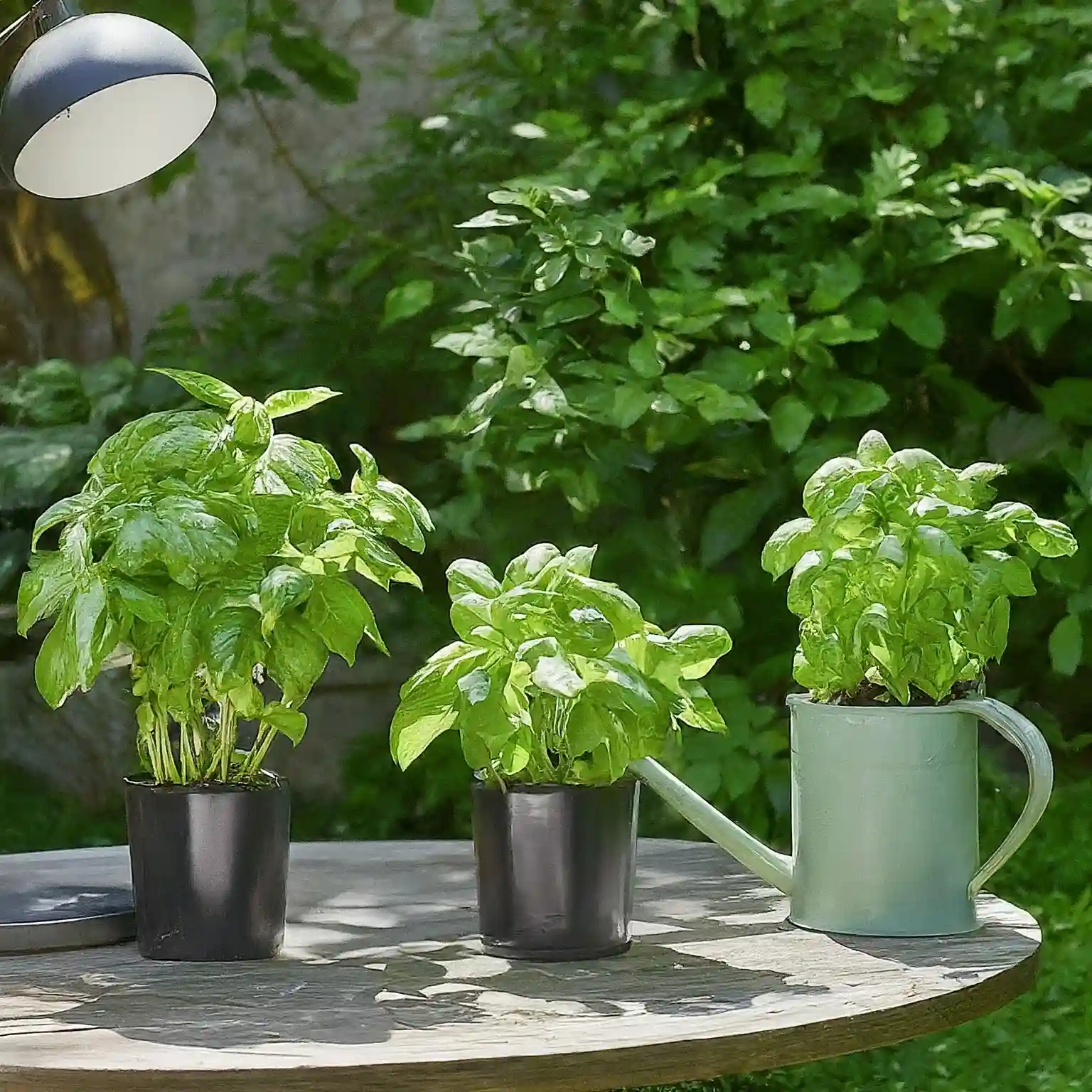
1. Tips for Growing Basil in Full Sun:
- Regular watering: With increased sunlight exposure, comes increased water evaporation. Regularly check the soil moisture and water your basil plant deeply when the top inch of soil feels dry to the touch.
- Fertilizing with a balanced NPK fertilizer: During the growing season, applying a balanced fertilizer formulated for herbs like basil can provide essential nutrients to support healthy growth and sustain the demands of full sun exposure. Follow the instructions on the fertilizer package for proper application rates and frequency.
- Pinching off flowers: While the tiny white flowers of basil are aesthetically pleasing, they can signal the end of the plant’s vegetative growth. Regularly pinching off flower buds encourages the plant to focus its energy on producing more leaves, ultimately leading to a bushier and more productive basil plant.
2. Strategies for Basil in Partial Sun or Shade:
- Increasing light exposure whenever possible: If your basil is in partial sun or shade, try to maximize its exposure to direct sunlight. Prune any nearby foliage or branches that might be casting shadows on the plant. Additionally, consider moving the plant to a sunnier location if possible.
- Choosing shade-tolerant basil varieties: Certain basil varieties, like Thai basil, are better adapted to tolerate partial shade than others. If full sun exposure is limited, consider opting for these shade-tolerant varieties to increase your chances of success.
- Adjusting watering frequency: Plants receiving less sunlight require less water as they transpire (release water vapor) at a slower rate. Be mindful of overwatering basil in partial sun or shade, as this can lead to root rot and other problems. Monitor the soil moisture and adjust your watering schedule accordingly.
By understanding the unique needs of basil in different sun conditions, you can provide the appropriate care to ensure it thrives and rewards you with an abundance of flavorful leaves.
Addressing Common Sun-Related Issues with Basil: Troubleshooting for Sunny Success
Even with the best intentions, providing the optimal amount of sunlight for your basil can sometimes lead to unexpected challenges. Here’s how to address some common sun-related issues and keep your basil thriving:
1. Signs Your Basil Isn’t Getting Enough Sun:
- Leggy and stretched stems: When basil doesn’t receive enough sunlight, it stretches its stems towards the light source, resulting in a weak and lanky appearance.
- Small and pale leaves: Insufficient sunlight can lead to stunted growth, resulting in smaller leaves with a pale green color, lacking the vibrant hue of a healthy basil plant.
- Reduced flavor and aroma: As mentioned earlier, sunlight plays a crucial role in the production of essential oils that contribute to basil’s distinct flavor and aroma. Plants deprived of adequate sunlight might have weaker flavor and aroma profiles.
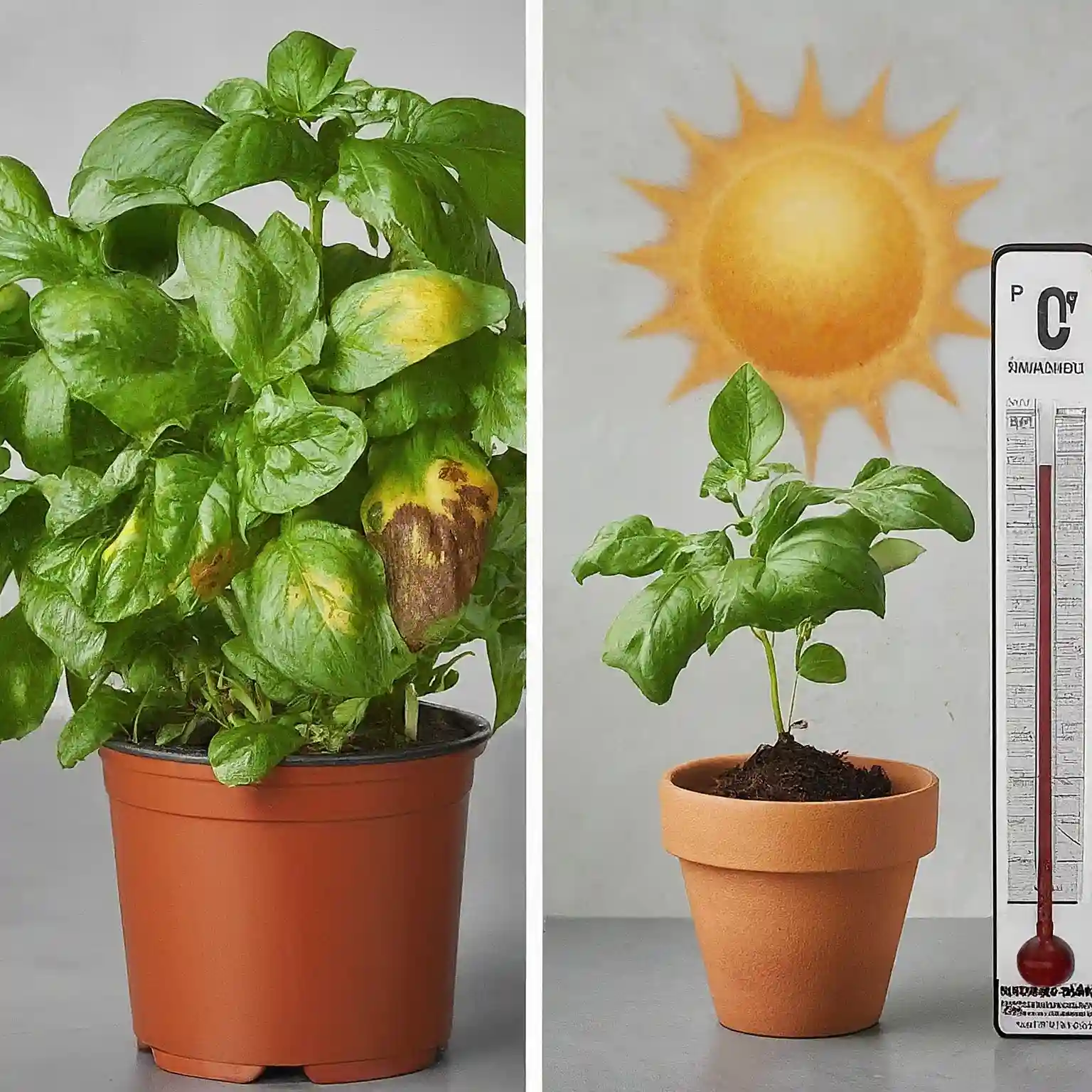
2. Dealing with Sunburn on Basil Plants:
- Causes: Excessive midday sun exposure, sudden changes in light intensity (e.g., moving a plant from indoors to full sun outdoors) can scorch the leaves, causing brown or yellow patches.
- Protecting plants with shade cloth or row covers: During periods of intense midday sun, consider using shade cloth or row covers to provide temporary shade and prevent leaf scorch. Introduce shade gradually to avoid sudden changes in light intensity.
- Gradually acclimatizing plants to increased sunlight: If moving your basil plant outdoors from a shaded location, gradually introduce it to full sun exposure over a few days. This allows the plant to adjust and minimize the risk of sunburn.
Remember: By identifying the signs and taking corrective action, you can help your basil recover from sun-related issues and get it back on track to flourishing under the right amount of sunshine.
Bonus Tip: For additional guidance on troubleshooting common basil problems
Conclusion: Sun is Key to Happy and Healthy Basil!
By delving into the question of does basil like full sun, we’ve uncovered the crucial role sunlight plays in the life of this beloved herb. From promoting healthy growth and vibrant flavor to influencing essential oil production, adequate sun exposure is essential for a thriving basil plant.
Remember, the ideal scenario is providing your basil with 6-8 hours of direct sunlight daily. However, understanding the nuances of your specific climate and adapting your approach accordingly is key to success.
Here are some final takeaways to ensure your basil enjoys a sun-kissed life:
- Choose the right location: Select a sunny spot in your garden or a south/west-facing window indoors if growing it inside.
- Provide consistent sunlight: Aim for 6-8 hours of direct sunlight daily, adjusting for regional variations and hot midday sun if necessary.
- Supplement with artificial lights indoors: If natural light is insufficient, use grow lights to meet the basil’s light requirements.
- Observe your plant: Pay attention to signs of insufficient or excessive sunlight and adjust accordingly.
- Water and fertilize appropriately: Adjust watering frequency and fertilization based on the amount of sunlight your basil receives.
By following these tips and understanding the intricate relationship between does basil like full sun and its well-being, you can cultivate a thriving basil plant that rewards you with fresh, flavorful leaves throughout the season.
Bonus Tip: Explore our website for additional resources on basil care, including:
- 7 Ways of Using Basil as a Mosquito Repellent
- 10 Best Ways How to Care for Basil Plant Indoors
- Ultimate Guide: When to Harvest Basil from Plant
I hope this comprehensive guide has empowered you to answer the question of does basil like full sun confidently and cultivate a thriving basil haven in your home!
Frequently Asked Questions (FAQs) About Basil and Sun: Your Burning Questions Answered
Understanding the relationship between does basil like full sun and your plant’s needs can be a learning curve. Here are some commonly asked questions to address any lingering doubts and equip you with complete knowledge:
Q: Can basil grow in full shade?
A: While technically possible, basil will struggle to thrive in full shade. It will likely exhibit weak growth, small leaves, and lack its characteristic flavor and aroma. If full sun is unavailable, consider opting for a location with at least partial sun or choose a shade-tolerant basil variety like Thai basil. Remember, the more sunlight your basil receives, the better it will perform.
Q: How many hours of sunlight does basil need indoors?
A: If you’re growing basil indoors, it requires a minimum of 12-14 hours of daily light exposure. However, relying solely on natural light from windows might not be sufficient. Supplementing with grow lights specifically designed for plants can ensure your basil receives the necessary light intensity for optimal growth.
Q: What happens if my basil gets too much sun?
A: While full sun is generally beneficial for basil, excessive sun exposure, particularly during the hottest part of the day, can lead to leaf scorch. This manifests as brown or yellow patches on the leaves. If you observe this, consider providing temporary shade using shade cloth or row covers, especially during peak sun hours.
Q: What are some good companion plants for basil in full sun?
A: When planting basil in full sun, consider companion plants that share similar sun requirements and can benefit from each other’s presence. Some good options include tomatoes, peppers, marigolds (which help deter pests), and lettuce (which benefits from the shade cast by taller basil plants).
By exploring these frequently asked questions and their answers, you gain a deeper understanding of does basil like full sun and its implications for successful cultivation. Remember, the key lies in observing your basil plant’s response to sunlight and adjusting its environment or care routine as needed for optimal growth and harvest.